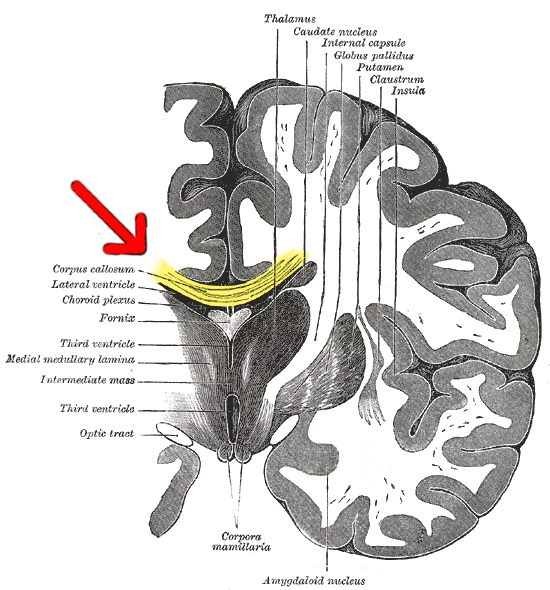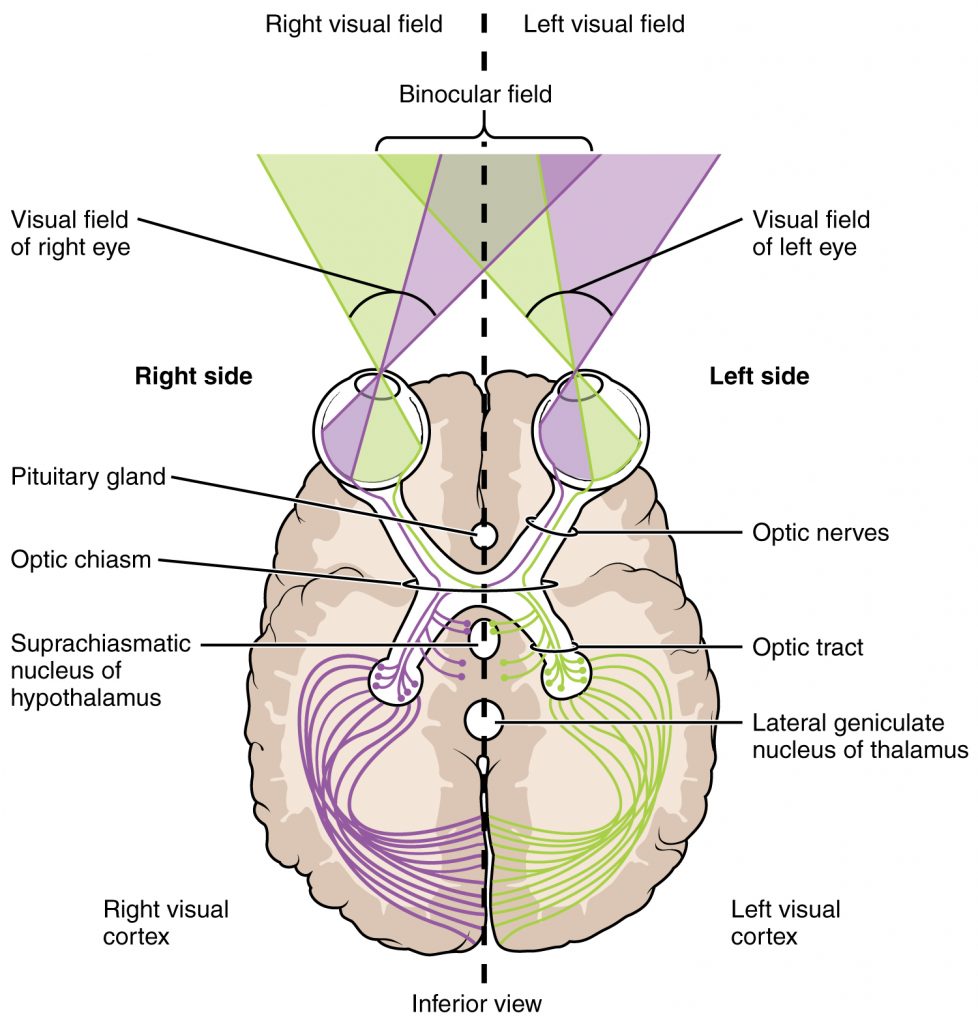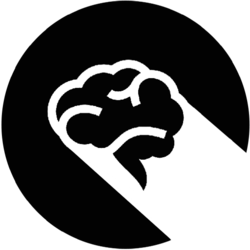Decades of research have shown that there is an area in the left-hemisphere of our brains that constantly makes up stories about anything and everything! The pioneer of the research, neuroscientist Michael Gazzaniga and his colleagues call it “the interpreter”.
They discovered the interpreter while they were working with patients so called “split-brain patients”.
As you might remember, the brain is composed of two hemispheres: the right and the left, and corpus callosum is the bundle of neurons connecting the two. Corpus callosotomy, which is the transection of corpus callosum, is a procedure employed to ease the symptoms in patients with severe epilepsy. The aim of this procedure is to inhibit the communication between the two hemispheres so that when a seizure starts in one hemisphere, it will not be able to propagate to the other.

Gazzaniga had the opportunity to work with split-brain patients while he was working at Roger Sperry’s lab, the pioneer of split-brain research. Although other brain functions seemed unaffected after the surgery, Gazzaniga thought that may not be the case, and he created some tests to explore the brains of split-brain patients. Now that the two hemispheres were disconnected, it was possible to examine them separately by representing the stimuli either to the right side or the left side of the body.
One of the tests included representing pictures of certain objects to the patient on a screen divided in half: the right and the left. When the object is represented on the right half of the screen, the patient had no problem telling what he saw. However, when it was represented on the left half of the screen, the patient said he did not see a thing. Gazzaniga gave him paper and a pen, and asked him to draw, and this time the patient was able to draw “what he could not see”, which can be interpreted as the fact that his brain actually did get the information, but simply could not name it. Hereby, results of this simple test signified an asymmetry between the two hemispheres of human brain regarding language skills.

As you know, information from each side of the body goes to the opposite side of the brain, which is known as the contralateral organization of the brain. When the stimulus is represented on the right half of the screen, the information goes to the left hemisphere. Since the speech center is located on the left-hemisphere in most people’s brains, the patient is able to name the stimulus. On the other hand, when the stimulus is represented on the left side of the screen, the information goes to the right hemisphere, where there is no speech center, so it is not possible to name the stimulus.

As the experiments continued, Gazzaniga and colleagues made another discovery. After the patient drew the picture he “saw” on the left half of the screen, let’s say a glass of water, he was asked why he drew a glass of water, the patient made an explanation such as “I must be thirsty”, which is not true! The only reason he drew the picture of a glass of water was because his right hemisphere “saw” the picture on the screen. However, since he could not name it, he consciously did not acknowledge that he saw it. Even so, his brain found a quite logical explanation for his behavior, and it was “the interpreter”.
Although split-brain research made it possible to discover and study “the interpreter”, whether we have undergone a split-brain surgery or not, we all have an interpreter in our left brain making up stories for us every single minute. It tries to explain our behavior. It tries to explain others’ behaviors. It tries to explain every single event, every situation. Yet, as Gazzaniga states “The interpreter is only as good as the information it gets.”
The left-brain interpreter is doing what it can using the information it already has. It does not care about looking around for more data spending any more time and energy. It does not care if the explanation is true. “If it makes some sense, keep it.”
If necessary, it will rewrite a story. If necessary, it will invent things, people, memories, thoughts, and even feelings. Simply to hold the story together. Simply to create a coherent sense of self. Simply to find an order in chaos, and feel secure finally.
The Interpreter and Psychopathology
So does all of this mean that the interpreter is doing a bad thing? Well, no, not quite. As for every function of human body this ability of the brain was favored over the course of evolution for a reason. The problem arises when we believe “the interpreter” without any question. Sometimes we get lost in our interpretations so deeply that it eventually leads to psychological disorders.
Interpretations about our own feelings lead to anxiety disorders for example. Think about social anxiety disorder. The person believes his/her interpretations about his/her feelings such as “I should not be nervous. I should not get anxious. I must stay calm.”, which makes the person eventually more anxious.
Interpretations about our own thoughts, on the other hand, might lead to disorders such as obsessive compulsive disorder. “Why do these images keep coming? Why am I having these thoughts? What kind of a person has these kind of thoughts? What is wrong with me?” Well, research has shown that a big portion of the population are having the same kind of thoughts/images as OCD patients do. However, not everybody having obsessions suffers from OCD. The difference lies in how strongly the person believes in “the obsessions must have a secret meaning (such as desiring to hurt someone)”,which is their interpretations about their thoughts.
How about our interpretations about the world, about a situation, about others’ behaviors? “-Oh, you got sick because you didn’t listen to me when I told you to wear your jacket. -Oh, no, mum. I understand that your left-brain interpreter is trying to teach me a lesson for future reference, but there is no way we can know for sure if your argument is true. We only know that I got sick because the influenza virus on my upper respiratory tract got a way to infect the epithelial cells, replicated itself, which activated the immune response, and eventually caused the fever and the runny nose.”
Reality is that simple. Why add anything else?
The Interpreter and Cognitive Psyhotherapies
It is true that human mind has a tendency to create stories, and it is true that we cannot prevent our brain from doing it, BUT we can choose which of those interpretations to believe.
We can question our beliefs about our feelings. “Is it true that I shouldn’t feel anxious?” “Is it true that I should be depressed because this and that happened?
We can question our beliefs about your thoughts. “Is it true that I shouldn’t have these thoughts?” “Is it true that I cannot do it anymore?”
We can question what we believe about people and situations. “Is it true that they don’t care about me? Is it true that this is the end of the world?”
We can question any of our beliefs if they cause us pain. “IS IT TRUE WHAT I CHOOSE TO BELIEVE?”
We can ask ourselves:
What evidence do I have to support this thought?
How did I come to this conclusion?
Is there any possibility that there is another explanation to this situation?
If I think about this situation 5 years from now, is it possible that I will evaluate it differently or I will be able to see it from a different perspective?
If I wouldn’t be feeling so . . . right now, would I think differently?
…
For more techniques for dealing with the left-brain interpreter, you can see our posts: “Automatic Thoughts: What are They and How can We Identify Them?” and “How to Challenge Automatic Thoughts“
This is all for today. I will edit this post as it is necessary.
Write to you soon!
Aysegul.
References
Clark D. A. (Ed.). (2005) Intrusive Thoughts in Clinical Disorders: Theory, Research, and Treatment, New York: The Guilford Press.
Gazzaniga, M. S. (2011). Who’s in Charge?: Free Will and Science of the Brain.
New York, NY : Ecco
Gots, J. (2012). Your Storytellng Brain. Retrieved April 1, 2019 from
https://bigthink.com/overthinking-everything-with-jason-gots/your-storytelling-brain



3 Replies to “Storytelling Brain: The Left-Brain Interpreter”